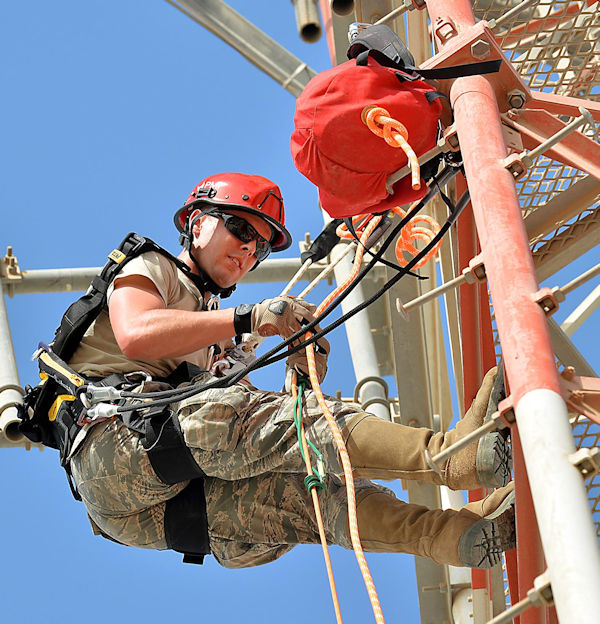Fall Protection Program Elements
- Accident investigation: Managers and supervisors promptly investigate all fall accidents and near misses, and then determine how to eliminate their causes. They conduct a thorough "analysis" for the express purpose of improving the safety management system, not assigning blame. Remember, fix the system, not the blame!
- Education and Training: All employees are educated about the fall hazards in the workplace and they receive training in how to safely accomplish tasks while working at elevation, and how to properly use fall protection equipment. The employer must provide training to each employee who is required to use fall protection. Each employee should be trained to know at least the following about fall protection:
- why it is necessary
- when it is necessary
- how to properly don, doff, adjust and wear fall protection
- the limitations of fall protection
- the proper care, maintenance, useful life, and disposal of fall protection
- an understanding of the training
- the ability to use fall protection properly
- Analysis and Evaluation: Improving the Fall Protection Program using an effective analysis and evaluation process is one of the most important safety staff activities. Managers and supervisors, with help from other employees, should analyze and evaluate the program's strengths and weaknesses at least once a year. To do this, the employer should use these basic steps:
- Identify what you have.
- Compare what exists with what is known to work best.
- Make improvements as needed.
Each employee is required to use fall protection and, before being allowed to perform work requiring fall protection, each employee must demonstrate:
It's important to know that the element which usually results in more OSHA citations is the failure to provide adequate fall protection training. If someone is seriously injured or dies as a result of a fall, OSHA compliance officers (and lawyers) will first look long and hard at your training program because they know that it is the area that is more likely lacking in due diligence.
You can learn more about the elements of an effective safety management system in course 700 Introduction to Safety Management.
Knowledge Check Choose the best answer for the question.
2-3. Which element of the Fall Protection Program is an OSHA accident investigation most likely to focus on first if a fall accident occurs?
You forgot to answer the question!

